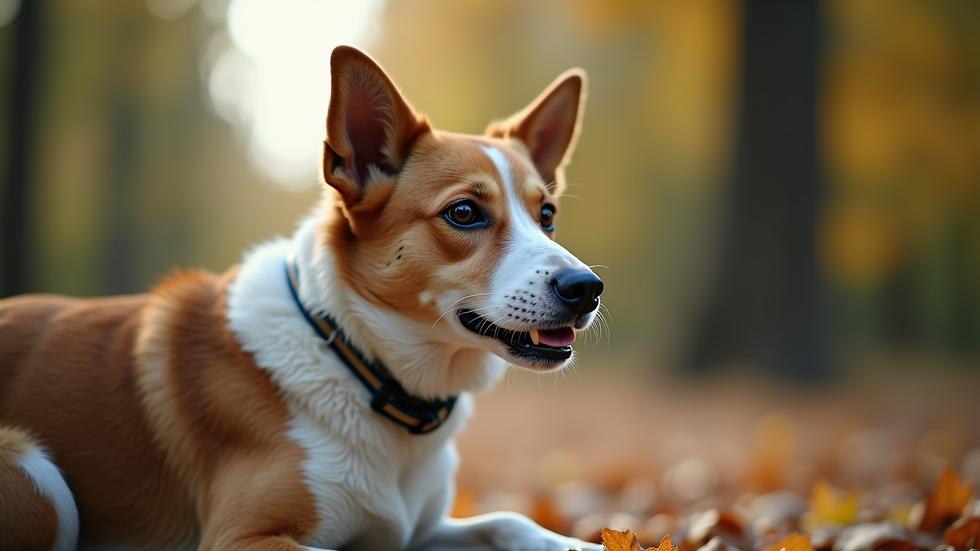
Unraveling the Mysteries of Cancer Scent Detection Dogs: How Do They Uncover the Unseen?
- k9nose2adventure
- Jan 13
- 3 min read
Cancer detection is an evolving field, attracting attention for its innovative approaches to identifying this complex disease early. One of the most intriguing advancements comes from an unexpected place: our furry friends. Cancer scent detection dogs have emerged as essential allies in the battle against cancer, using their extraordinary sense of smell to potentially uncover the disease long before conventional tests can.
The Science Behind Dog Scent Detection
Dogs have an astonishing sense of smell, estimated to be 10,000 to 100,000 times more sensitive than that of humans. This ability allows them to detect even the tiniest traces of certain chemicals. Research has shown that cancer cells emit unique volatile compounds—or odors—that may signal their presence.
In controlled studies, trained dogs have achieved notable success in distinguishing these scents. For example, one study found that dogs could differentiate between breath samples from healthy people and those with lung cancer with an accuracy rate of over 90%. This offers a glimpse into the potential for non-invasive, early detection methods that could improve patient outcomes significantly.
Training Cancer Detection Dogs
Training a cancer detection dog is a careful process that combines science and skilled training. Breeds known for their exceptional sense of smell, like German Shepherds and Labrador Retrievers, are often chosen for this purpose.
During training, dogs are exposed to samples that contain cancer-specific scents, including breath, urine, and tissue from cancerous and healthy individuals. Trainers use positive reinforcement; when dogs successfully identify the target scent, they are rewarded. Over time, these dogs learn to recognize and accurately differentiate between cancerous and non-cancerous samples.

Success Stories: Real-World Applications
The impact of cancer scent detection dogs is already evident in various settings. For example, a clinical trial reported that dogs accurately identified 97% of breast cancer cases from breath samples. These impressive success rates indicate that dogs can serve as an effective addition to traditional diagnostic methods, acting as a preliminary screening tool.
These dogs have also participated in public events, showcasing their abilities to raise awareness and funds for cancer research. The captivating stories of these dogs have inspired many, leading to a 25% increase in donations for cancer research initiatives in some cases.
Limitations and Challenges
Despite their promising capabilities, the use of cancer detection dogs faces several challenges. One key issue is the variability in performance and accuracy based on individual training and experience. Additionally, different cancers produce diverse scent profiles, complicating the standardization of detection across various breeds and settings.
Current regulations for the implementation of canine detection in clinical practices remain underdeveloped. While studies are ongoing, establishing clear protocols and guidelines for adopting cancer detection dogs in routine cancer screenings is essential for future success.
Future Prospects for Cancer Detection
As the science behind canine smell continues to advance, researchers are keen to integrate these dogs into existing healthcare frameworks. Their abilities may complement traditional diagnostic tools; for example, combining canine detection with imaging techniques or biopsies could create a more comprehensive approach to cancer diagnosis.
Researchers are also exploring the specific volatile organic compounds related to various cancers. This understanding can lead to more accurate diagnostic tools that utilize both dog capabilities and technological advancements, improving early detection.
The Human-Animal Bond in Cancer Detection
The relationship between humans and dogs in this field is not just scientific. It underscores an extraordinary bond that has existed for thousands of years. These dogs are not merely tools for detection; they also provide emotional support to their handlers and the patients they assist. Handlers often share heartfelt stories about how their dogs’ successes have brought hope to patients facing daunting cancer diagnoses.
Involving dogs in healthcare highlights the significance of empathy and compassion in medical settings. Their capacity to serve as comforting companions during stressful times can be invaluable for patients and their families.
The Road Ahead
Cancer scent detection dogs are transforming how we think about early cancer detection. Although challenges persist, the success stories and ongoing research provide hope for innovative, non-invasive screening techniques that could save lives. As we explore the vast potential of these remarkable canines, we may unlock not only improved diagnostic methods but also a stronger appreciation for the unique relationship between humans and dogs in the fight against cancer.



Comments